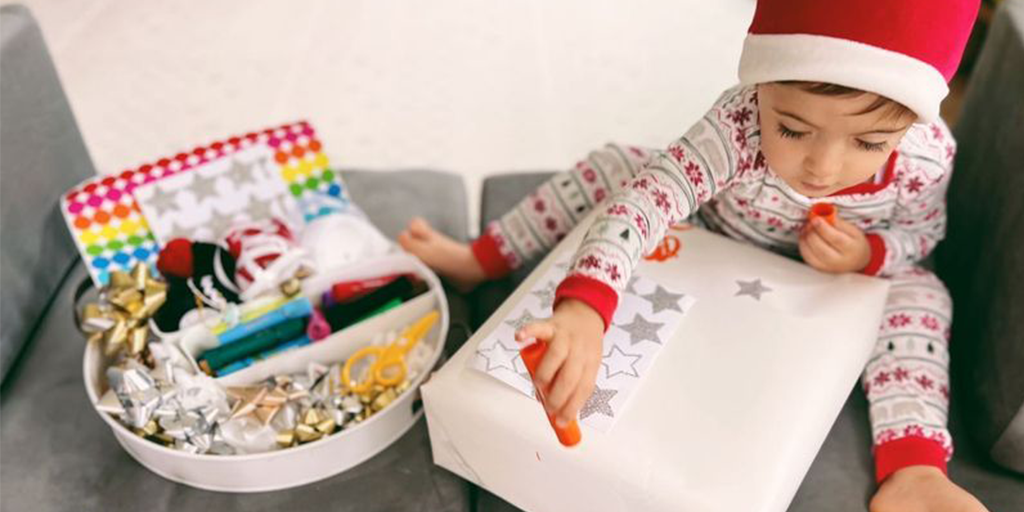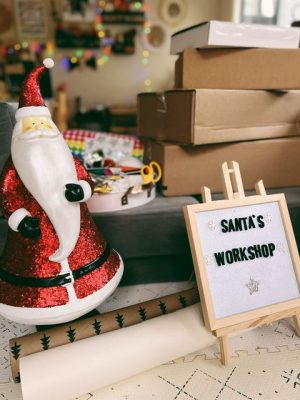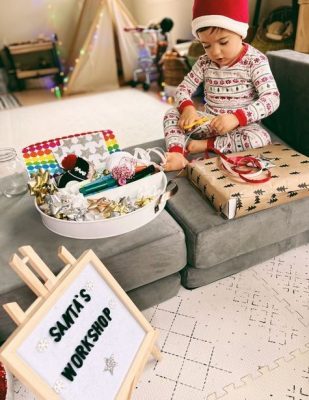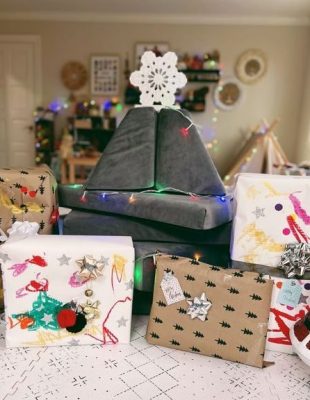
How To Use The Whatsit as a Holiday Wrapping Station
GUEST POST
 At Children’s Factory, we love to see customers using our play equipment and furniture in “outside-the-box” ways. TinkerWonderPlay does a great job by showing us how The Whatsit™ can be used as a holiday wrapping station. The Whatsit™ is our kids’ couch that was designed to double as a fun play set. Below you will see just how Yasmeen Kamrani Sallam and her family transformed their Whatsit…
At Children’s Factory, we love to see customers using our play equipment and furniture in “outside-the-box” ways. TinkerWonderPlay does a great job by showing us how The Whatsit™ can be used as a holiday wrapping station. The Whatsit™ is our kids’ couch that was designed to double as a fun play set. Below you will see just how Yasmeen Kamrani Sallam and her family transformed their Whatsit…
Transforming The Whatsit™ into Santa’s Wrapping Station and Workshop
Creating a workshop and wrapping station for Santa has always been a hit in daycare centers and preschools. This year, I used our Children’s Factory Whatsit to design a creative space for my kids to decorate presents. The Whatsit™’s versatility made it my first choice. It’s soft, cushy and has the perfect flat surfaces for my tikes to use for a wrapping station.
 If putting together a Santa’s Workshop is a goal, have no fear. It’s simple! All you need is a few recycled boxes, wrapping paper, butcher paper, tape, stickers, ribbon, scissors, gift tags, felt letter board, bows and tempera sticks. Next, invite children to wrap and decorate the boxes. Encourage them to get creative!
If putting together a Santa’s Workshop is a goal, have no fear. It’s simple! All you need is a few recycled boxes, wrapping paper, butcher paper, tape, stickers, ribbon, scissors, gift tags, felt letter board, bows and tempera sticks. Next, invite children to wrap and decorate the boxes. Encourage them to get creative!
Children Love Tackling Adult Tasks
What child doesn’t secretly desire to play the role of a magical elf? It’s empowering for kids to tackle adult tasks. Fine motor skills will be enhanced as they fold, tape, color, and use their scissors. The right side of their brain is challenged as they use their creativity to decorate and color the wrapping paper, place ribbon around boxes and decide which bows coordinate with all the other elements. 
Wrapping Presents Develops Fine Motor Skills
Kids need to build up the tiny muscles in their hands. To cut wrapping paper, kids need to use scissors, which requires them to open and close the scissors as they cut. Strengthening these muscles is very important. Why? Writing, painting, gripping utensils to eat, and many other daily activities require us to use them. Cutting develops eye-hand coordination and neural connections to the brain. Cutting with one hand while holding the paper with the other is an example of a task requiring bilateral coordination. Bilateral coordination refers to any activity where both hands work independently to perform separate tasks.
The Power of Play Transforms Learning
 Wrapping stations transform what may be a mundane task for adults into a fun, creative, learning experience for kids. Play has always been and will continue to be an integral part of the developmental learning process. Wrapping Christmas presents requires fine motor skills, hand-eye coordination, bilateral coordination, and creativity to get the job done. Additionally, as kids make choices about how to decorate presents, they are developing the critical thinking and problem solving skills necessary to live a successful life. #Whatsit
Wrapping stations transform what may be a mundane task for adults into a fun, creative, learning experience for kids. Play has always been and will continue to be an integral part of the developmental learning process. Wrapping Christmas presents requires fine motor skills, hand-eye coordination, bilateral coordination, and creativity to get the job done. Additionally, as kids make choices about how to decorate presents, they are developing the critical thinking and problem solving skills necessary to live a successful life. #Whatsit
For more fun posts, visit TinkerWonderPlay.
What creative ways are you using our furniture and/or play equipment?